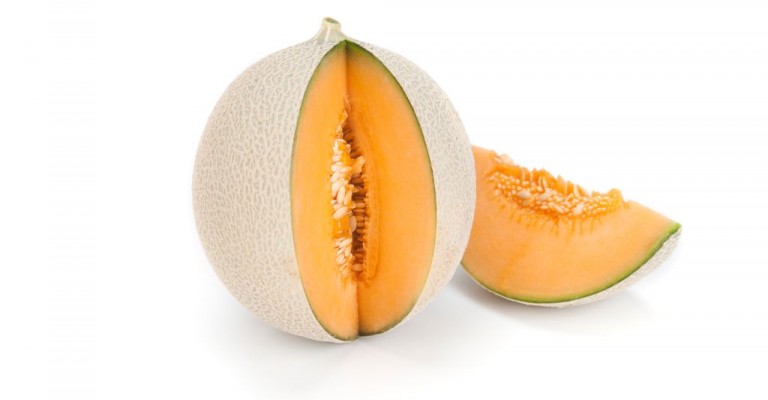Vegan | Gluten-Free | OMS-Friendly | Low-FODMAP
Melons come in many shapes and sizes, and readily cross-breed, resulting in a variety of shapes, sizes, textures, and flavours. Rock melons, or the more common net-skinned, orange- or green-fleshed cantaloupes are called muskmelons or Persian melons.
Melon flavours
The two most important features determining flavour are the variety of melon and its ripeness. The most flavoursome are the true, smooth-skin European varieties, particularly French cantaloupes.
Cutting and eating melons
Always cut a melon lengthwise. Remember the blossom end will always taste better than the stem end. Cantaloupes make great sorbets and ices.
Ways to eat melons
- With black pepper or paprika
- Warm, straight from the garden
- Chilled, straight from the fridge
- Filled with wine (vintage Port, Banyuls, Muscat, Moscato)
How to buy melons
Choose a melon that is as ripe as possible, so learning how to tell how ripe a melon is is important. If you were growing it, then you would know the ripeness by how easily the melon slipped its stem. This means if the melon was harvested early, there will be a partial stem which has been cut. The most reliable indicator we have is where the blossom end yields to pressure, the scent is distinctive and aromatic, and the melon has changed colour, more yellow or brown, instead of green.
Honeydew, crenshaw and casaba need to be yellower. Refrigerating a ripe melon will save it going bad before you can eat it.
Best varieties of melons for eating
- Petit Gris de Rennes (France)
- Prescott Fond Blanc (France)
- Charentais (France)
- Ha’Ogen (Israel/Hungary)
- Jenny Lind
- Anne Arundel
- Banana
- Delicious 51
- Eden’s Gem
- Emerald Gem
- Fordhook Gem
- Golden Gopher (part honeydew)
- Green Nutmeg
- Rocky Ford
- Montreal Market
- Oka
Growing melons
Melons like it hot. As they become ripe, their flesh turns from crunchy to soft and juicy. The blossom end is always the sweetest and most aromatic.




